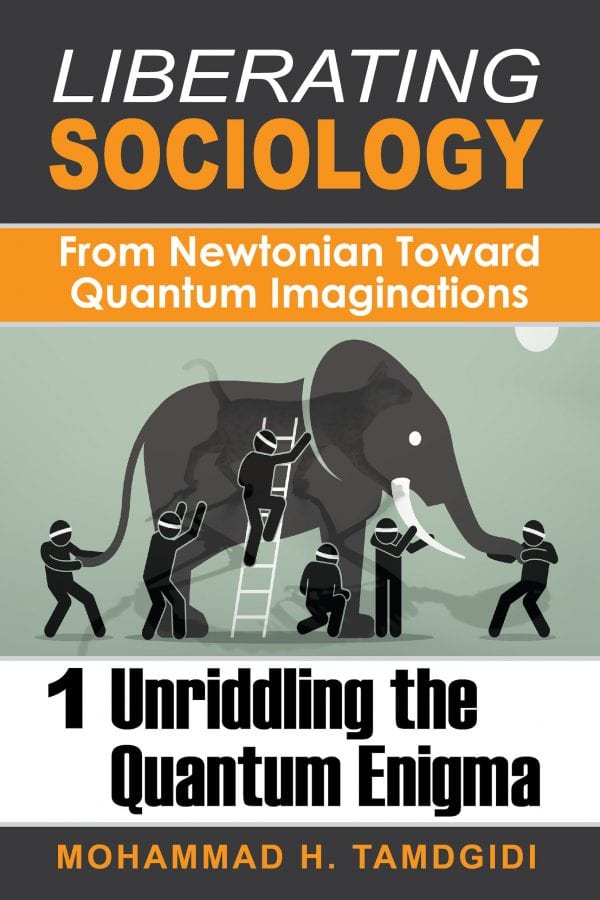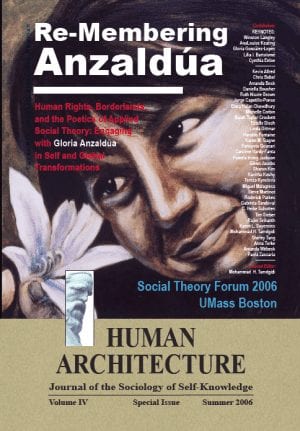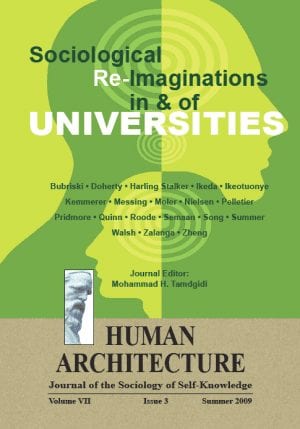Book Section: CHAPTER 6 — Introducing a Relativistic Interpretation: Unriddling the “Wave-Particle Duality of Light” as the Skeleton of the Quantum Enigma’s Cat Gone Elephant — by Mohammad H. Tamdgidi
$20.00
This is the sixth chapter of the first volume of the series, Liberating Sociology: From Newtonian to Quantum Imaginations, subtitled Unriddling the Quantum Enigma, by Mohammad H. Tamdgidi. In this chapter titled “Introducing a Relativistic Interpretation: Unriddling the ‘Wave-Particle Duality of Light’ as the Skeleton of the Quantum Enigma’s Cat Gone Elephant,” he argues that the Complementary notion of the “wave-particle duality of light” as alternating spread-out or particle modes in different spatiotemporal or experimental contexts does not really solve the problem of dualistic imagination of the duality of light.
Description
Abstract
This is the sixth chapter of the first volume of the series, Liberating Sociology: From Newtonian to Quantum Imaginations, subtitled Unriddling the Quantum Enigma, by Mohammad H. Tamdgidi. In this chapter titled “Introducing a Relativistic Interpretation: Unriddling the ‘Wave-Particle Duality of Light’ as the Skeleton of the Quantum Enigma’s Cat Gone Elephant,” he argues that the Complementary notion of the “wave-particle duality of light” as alternating spread-out or particle modes in different spatiotemporal or experimental contexts does not really solve the problem of dualistic imagination of the duality of light. The logical assumption of such a solution is, and must be, that in its particle mode the object is not a wave, and in its wave mode, the object is not a particle. In other words, even though it may appear that we have solved the problem of how to imagine an object to be both corpuscular and wavy, the alternating particle or wave imagination does not effectively lead to a nondualistic imagination of the nature of the object. It merely brings back the dualism from the back door.
Tamdgidi then proceeds to survey various thought experiments—employed before (Doppler effect), by (light-chasing, train-lightning, twins), and following (jet-barn, muons) Einstein—that have contributed to his special and general theorizations of relativity and their understanding. He argues that an imaginal oversight, a blunder, in the thought experiments associated with Einstein’s theorizations of relativity engendered the enigma of “wave-particle duality of light.” The oversight basically allowed for a classical Newtonian bias to unconsciously and habitually survive and dualize the imagination of light’s nature. In the meantime, however, Tamdgidi argues that those same relativity theories and other associated imaginal insights associated with them offer keys for completing and thus correcting that imaginal oversight and resolving the decades-long enigma of the “wave-particle duality of light” as a necessary (though not sufficient, yet) condition for unriddling the quantum enigma in general. Ironically, the cause of what Einstein regarded to his last days to be an “incompleteness” gripping quantum theory was an incomplete imagination that had escaped Einstein’s own otherwise ingenious theoretical and imaginative vision.
Tamdgidi points to a previously unnoticed achronicity in how the 1905 Einstein reports on his youthful 1895 light-chasing thought experiment, and follows that lead to problematize the visualization of the light Einstein was “chasing” as a “beam,” on one hand, and the fragmentation and particular sequence in which Einstein published his 1905 miracle year papers, on the other—arguing that Einstein’s heuristic considerations for the nature of light in the first paper had not been informed of the relativistic considerations he theorized in his third 1905 paper. Other than sociological considerations, such insights lead Tamdgidi to argue that the light Einstein was chasing in his thought experiment should have been considered to be chasing him instead, and that he would be inside that light photon in no time, any ways.
Tamdgidi’s relativistic interpretation of the “wave-particle duality of light” draws on especially the length contraction aspect of the relativistic effects (alongside time dilation) arising from the motion of objects (including photons). From our point of view, from the point of view of the young, 16-year-old Einstein imagining “chasing” a light “beam,” from the point of the 1905 Einstein writing and publishing his first miracle year paper on the nature of light arguing that light seems to have (also) a particle-like behavior as far as the photoelectric experiment proves, a photon is something “out there” separate from us “here.” It is tiny, because it is contracted, seemingly massless, given it is moving at the highest possible speed, that of light as an electromagnetic wave. Like the Earth-bound scientists’ explaining muons’ behavior from their own point of view, saying that in their own frame of reference, given its very short life-span, its time is dilated just enough to reach the surface of the Earth, we say the photon is timeless. It is a “contracted” particle that contains a quantum lump of energy of one or another electromagnetic wave frequency. Time does not exist for it, since it is moving (being considered massless) at the speed of light that it alone can claim.
However, there is another side to this plot that is important to keep in mind as well—if only we were able to follow Einstein’s golden rule of relativistic science and put ourselves in the shoes of the photon as well. For the photon traveling at the highest relativistic speed at which it alone can move, not only the Earth, but indeed the universe contracts to a tiny size, and relative to its own, the universal time slows down to a near halt. From this point of view, photon is no longer a tiny particle but a giant, one that embraces the universe. As the fish in the tank does not notice the water because it is in it and the water being also in the fish, we do not see the photon because we are in it. We would have to consider (from the photons’ standpoint) that we are living inside photons, their energy encompassing us, and not the other way around. From our vantage point, it is the opposite. The photon is most tiny, moving in a flash, it is a localized object that is propagated as a tiny electromagnetic wave; from the photon’s own point of view and spacetime reference frame, however, it is a wave spreading out in all directions. For the 1905 Einstein, the photon is a tiny particle moving as a “beam”; that may still be also a “proper” point of view. But, from the standpoint of the photon deemed otherwise to be by him and us a tiny localized wave, however, it is a giant spread-out object, with our every second of our time spreading ever more to encompass, in principle, the whole universe. In its own reference frame, its second is dilated to nearly an eternity, being timeless.
The so-called “wave-particle duality of light” is a false narrative. It is not only dualistic, it is also incorrect in contrasting a wave with a non-wave. The object is always a wave, being at once, depending on the reference frame considered, a localized and a spread-out wave. The perceived “duality” is a product of the relativistic distortion of spacetime resulting when two objects move relative to one another. For lower speeds compared to the speed of light, the effect is minimal but still present. The relativistic effect is akin to the effects stipulated in the jet-barn thought experiment. Although the experiment is not one Einstein invented or used in his theorizations of relativity, it is unique among the thought experiments associated with relativity in that it specifically illustrates the spatial implications of relativistic effects on bodies moving relative to one another. As such, it encapsulates the essential ingredients and key insights from relativity needed for unriddling the so-called enigma of the “wave-particle duality of light.”
Recommended Citation
Tamdgidi, Mohammad H. 2020. “CHAPTER 6 — Introducing a Relativistic Interpretation: Unriddling the “Wave-Particle Duality of Light” as the Skeleton of the Quantum Enigma’s Cat Gone Elephant.” Pp. 269-368 in Liberating Sociology: From Newtonian Toward Quantum Imaginations: Volume 1: Unriddling the Quantum Enigma. (Human Architecture: Journal of the Sociology of Self-Knowledge: Vol. XIII, Issue 1, 2020.) Belmont, MA: Okcir Press (an imprint of Ahead Publishing House).
The various editions of the volume of which this chapter is a part can be ordered from the Okcir Store and all major online bookstores worldwide (such as Amazon, Barnes&Noble, and others).
Read the Above Publication Online
To read the above publication online, you need to be logged in as an OKCIR Library member with a valid access. In that case just click on the large PDF icon below to access the publication. Make sure you refresh your browser page after logging in.








